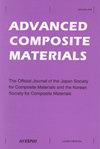cos2: ni17s18: al2s3薄膜作为超级电容器电极的惊人的能量存储和明确的光催化剂的污染物降解
IF 2.3
3区 材料科学
Q3 MATERIALS SCIENCE, COMPOSITES
引用次数: 0
摘要
摘要以二乙基二硫代氨基甲酸酯为硫源,采用物理气相沉积法制备了三元金属硫化物CoS2:Ni17S18:Al2S3薄膜。利用x射线衍射、扫描电子显微镜、x射线光电子能谱、紫外可见分光光度计和傅里叶变换红外光谱对合成的物质进行了鉴定和表征。在纳米尺度上,三元金属硫化物的平均晶粒尺寸为37.8 nm。扫描电镜显示球形颗粒,颗粒边缘呈圆角。XPS显示出元素的Al 2p、Co 2p、Ni 2p和S 2p的核能级峰。三元金属硫化物的带隙能为3.49 eV。使用循环伏安法对薄膜的惊人存储技术潜力进行了评估,显示出惊人的515 F g−1的超级电容,证明了材料的有效性。伏安结果表明纳米颗粒薄膜具有循环稳定性。此外,对亚甲蓝染料、农药唑胺、苯酚等污染物的光催化降解进行了探索,其降解速率常数为4.11 × 10−2 min−1,对农药的降解率达到91.5%。关键词:超级电容储能光催化薄膜金属硫化物致谢作者感谢巴基斯坦法蒂玛真纳女子大学环境科学系为完成这项工作提供了所需的技术和资金支持。作者还感谢巴基斯坦高等教育委员会和英国曼彻斯特大学光子科学研究所。作者非常感谢英国曼彻斯特大学刘旭钊博士在研究过程中给予的巨大帮助和协助。我们非常感谢巴基斯坦高等教育委员会在NRPU项目15782下为这项研究提供财政支持。披露声明作者未报告潜在的利益冲突。数据可用性声明支持本研究结果的数据可在合理要求下从通讯作者处获得。本文章由计算机程序翻译,如有差异,请以英文原文为准。
CoS 2 :Ni 17 S 18 :Al 2 S 3 thin film as supercapacitor electrode for astounding energy storage and explicit photocatalyst for pollutants degradation
AbstractThe ternary metal sulfide CoS2:Ni17S18:Al2S3 thin films were created in the presence of diethyldithiocarbamate as a sulfur source, pursued by physical vapour deposition. X-ray diffraction, scanning electron microscopy, X-ray photoelectron spectroscopy, UV-visible spectrophotometer, and Fourier transform infrared spectroscopy were used to identify and characterize the synthesised substances. The ternary metal sulfide had a mean crystallite size of 37.8 nm on the nanoscale. SEM revealed spherical particles with rounded edges particles. XPS presented Al 2p, Co 2p, Ni 2p and S 2p core level peaks of the elements. The ternary metal sulfide had a band gap energy of 3.49 eV. The phenomenal storage technology potential of the thin film was evaluated using cyclic voltammetry that revealed an astounding supercapacitance of 515 F g−1, demonstrating the material’s effectiveness. Voltammetric findings show the cycling stability of the nanoparticle thin film. Moreover, the photocatalytic degradation of contaminants such as methylene blue dye, pesticide zoxamide, and phenol was probed, with such a spectacular degradation rate constant of 4.11 × 10−2 min−1 with 91.5% degradation achieved for pesticide.Keywords: Supercapacitorenergy storagephotocatalystthin filmmetal sulfide AcknowledgementsAuthors express their gratitude to the Department of Environmental Sciences, Fatima Jinnah Women University, Pakistan for providing the technical and financial facilities needed for completion of this work. Authors also acknowledge the Higher Education Commission of Pakistan and Photon Science Institute, The University of Manchester, UK. The authors highly acknowledge Xuzhao Liu, PhD student, The University of Manchester, UK, for his tremendous help and assistance during the research. We are highly thankful to the Higher Education Commission of Pakistan for providing financial support for this research under NRPU project No. 15782.Disclosure statementNo potential conflict of interest was reported by the author(s).Data availability statementThe data that support the findings of this study are available from the corresponding author, upon reasonable request.
求助全文
通过发布文献求助,成功后即可免费获取论文全文。
去求助
来源期刊

Advanced Composite Materials
工程技术-材料科学:复合
CiteScore
5.00
自引率
20.70%
发文量
54
审稿时长
3 months
期刊介绍:
"Advanced Composite Materials (ACM), a bi-monthly publication of the Japan Society for Composite Materials and the Korean Society for Composite Materials, provides an international forum for researchers, manufacturers and designers who are working in the field of composite materials and their structures. Issues contain articles on all aspects of current scientific and technological progress in this interdisciplinary field. The topics of interest are physical, chemical, mechanical and other properties of advanced composites as well as their constituent materials; experimental and theoretical studies relating microscopic to macroscopic behavior; testing and evaluation with emphasis on environmental effects and reliability; novel techniques of fabricating various types of composites and of forming structural components utilizing these materials; design and analysis for specific applications.
Advanced Composite Materials publishes refereed original research papers, review papers, technical papers and short notes as well as some translated papers originally published in the Journal of the Japan Society for Composite Materials. Issues also contain news items such as information on new materials and their processing."
 求助内容:
求助内容: 应助结果提醒方式:
应助结果提醒方式:


